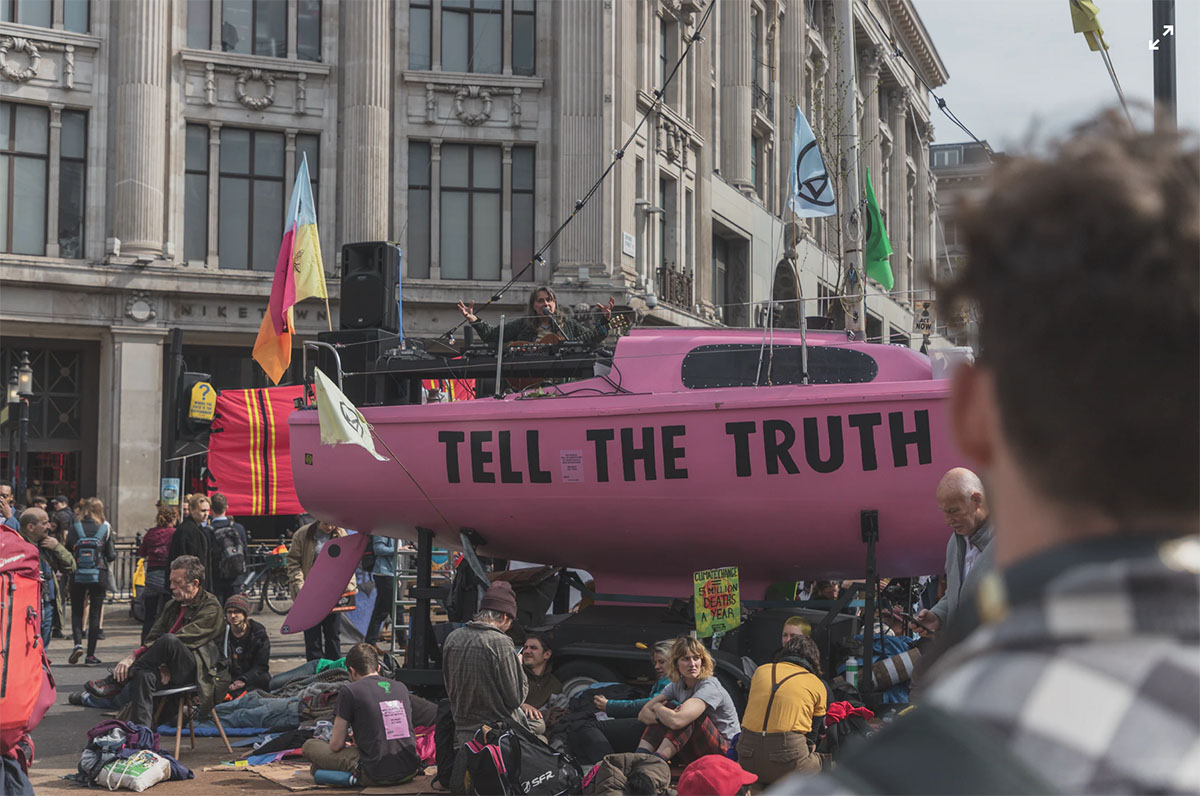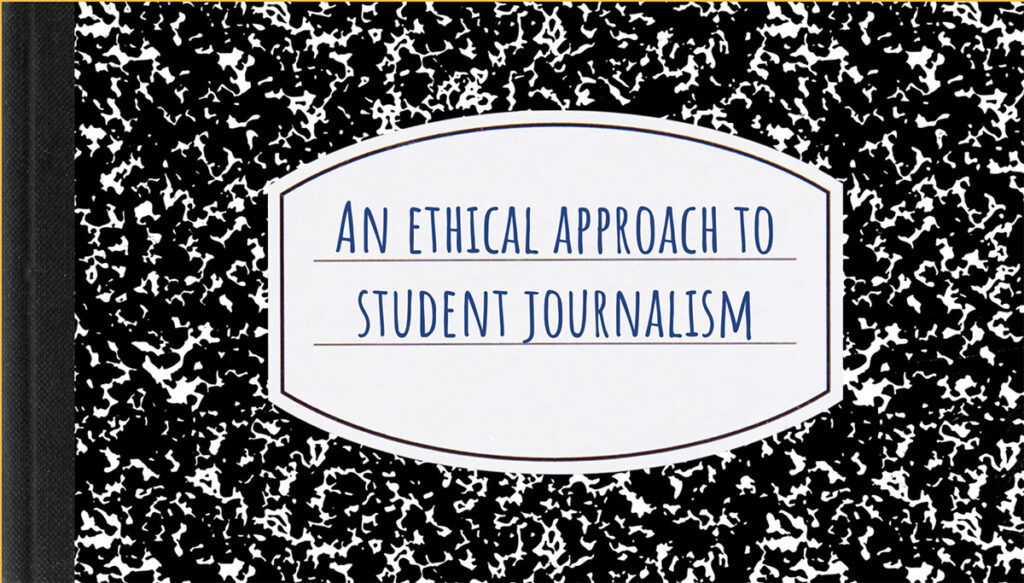An Ethical Approach to Civic Journalism

Although journalism is a profession with a strong ethical base, there are numerous examples exist of reporters knowingly crossing the ethical line or completely disdaining it. But reporters might also where where the line is. A fundamental principle of civic journalism dictates that news outlets present the news that is factually accurate, so that the audience can decide how to judge or evaluate the events of the day.
You might find that students are well-aware of examples of unethical behavior at news organizations, but if you are looking for illustrations, find examples to share with students here: examples of unethical behavior. You or your students can update this link with examples you find to illustrate the issue.
Below find information to use as a resource for teaching ethical behavior for student journalists and helping them create their own Code of Ethics for the work they do as a class.
Related Download: Here is a slide presentation (PowerPoint) you can share with students to help them create their own Code of Ethics and to develop one as a class.
What is Ethics in Journalism?
- Honesty. Journalists have an obligation to seek out the truth and report it as accurately as possible. This requires diligence: this means making every effort to seek out all the facts relevant to a story. Journalists should also corroborate any information with multiple sources.
- Independence. Journalists should avoid taking political sides and should not act on behalf of special interest groups. Any political affiliations or financial investments that might constitute a conflict of interest with the subject they are writing about should be declared to editors and readers. Some organizations characterize this principle as “objectivity,” while others, especially non-profit civic journalism projects, reject this term, as they position themselves explicitly on the side of public interest.
- Fairness. In addition to being independent, journalists should show impartiality and balance in their reporting. Most news stories have more than one side, and journalists should capture this. That said, they should not place two different perspectives on equal footing where one is unsupported by evidence. The exception to the impartiality rule is opinion writing, as well as “gonzo” journalism and creative nonfiction.
- Public accountability. News organizations should listen to their audience. To enable the public to hold them accountable, journalists should write under their own bylines and accept responsibility for their words. When news outlets publish factual errors, they need to issue a correction.
- Harm minimization. Not every fact that can be published should be published. If the amount of harm that could come to private individuals—particularly children—as a result of disclosure exceeds the public good that would come of it, then news outlets might choose not to publish the story. This is less of a consideration when it comes to public figures. It is huge, however, in matters of national security, where lives could be on the line.
- Avoiding libel. This is a legal as well as a moral imperative for journalists. Journalists cannot print false statements that damage a person’s reputation. In most jurisdictions, true statements cannot be libelous, so journalists can protect themselves by rigorously checking facts.
- Proper attribution. Journalists must never plagiarize. If they use information from another media outlet or journalist, they need to attribute it to them.
(Interested in digging deeper? See “The Four Pillars of Ethical Journalism” to learn more.)
How does the First Amendment fit in?
“Congress shall make no law respecting an establishment of religion, or prohibiting the free exercise thereof; or abridging the freedom of speech, or of the press; or the right of the people peaceably to assemble, and to petition the Government for a redress of grievances.”
The First Amendment doesn’t give journalists the right to say whatever they want. There are limitations on a free press, especially around defamation, slander, and libel. Understanding the language can help students better understand how the First Amendment relates to ethics in journalism.
Definitions
Defamation is communication which exposes a person to hatred, ridicule or contempt or lowers them in the esteem of their fellows, causes them to be shunned or injured in business dealings.
Slander is the utterance of false charges or misrepresentations which defame and damage another’s reputation. It is usually a false and defamatory oral statement about a person
Libel is defamation in written or printed words.
The New York Times v. Sullivan (1964) is a crucial Supreme Court case in understanding libel law. It ruled that public officials could not collect damages in civil lawsuits unless the reporter showed actual malice in their reporting, which means the reporter knowingly attempted to damage or destroy the reputation of the public official.
Gertz v. Welch (1974) delineated differences between public officials, public figures and private individuals.
Public officials usually are elected officials performing work for the public, the citizenry.
Public figures have attained such pervasive fame or notoriety or they hold a position of power and influence that they are a public figure for all contexts. Or a public figure can be someone who assumes some special notoriety in the resolution of a public question. A person voluntarily inserts themselves into a public controversy.
Private individuals are more likely to be vulnerable to injury. Private individuals don’t voluntarily expose themselves to the risk of injury from defamatory falsehoods concerning them. They don’t have power, prominence or notoriety.
Student Activity
Provide students with a list of names of people who might fit these different definitions. Have them identify if the individual is a public official, public figure, or private individual.
With a partner or a group students should create scenarios of ethical/unethical behavior.
Mentor Text: Red Light-Green Light approach to ethical situations (PowerPoint)
What else can students make?
Students should identify the harm that comes from unethical reporters. They could individually or in groups develop scenarios of unethical behavior.
Be Inspired: Develop a statement that proclaims the necessity of ethical behavior. The statement also should define ethical and unethical behavior
Create: Without researching existing codes of ethics, have students develop their own code of ethics for journalists in general or student journalists
Document: As they create this code of ethics, they should be able to explain why they included and excluded certain behaviors. They also should be able explain how such a statement will govern specific reporting behaviors. Make a log to reflect on the creation of your code of ethics.
Share: Share your code of ethics with your classmates. Seek their reactions and responses. Listen to their comments. Determine if you would like to or need to revise your code.
Collaborate: As a class, work together to create your own classroom Code of Ethics.
Mentor Text: National Scholastic Press Association (PDF)


